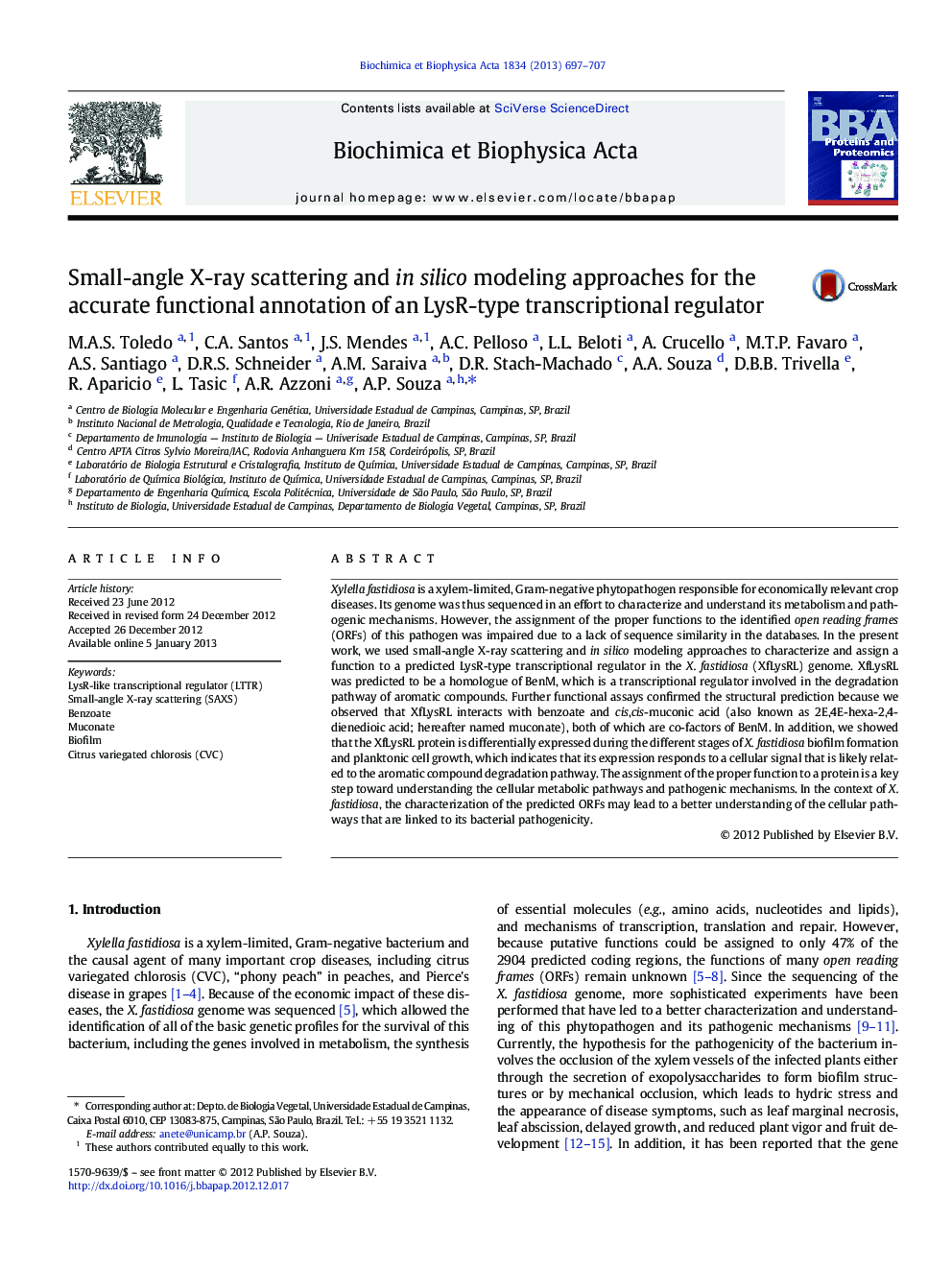| Article ID | Journal | Published Year | Pages | File Type |
|---|---|---|---|---|
| 1177954 | Biochimica et Biophysica Acta (BBA) - Proteins and Proteomics | 2013 | 11 Pages |
Xylella fastidiosa is a xylem-limited, Gram-negative phytopathogen responsible for economically relevant crop diseases. Its genome was thus sequenced in an effort to characterize and understand its metabolism and pathogenic mechanisms. However, the assignment of the proper functions to the identified open reading frames (ORFs) of this pathogen was impaired due to a lack of sequence similarity in the databases. In the present work, we used small-angle X-ray scattering and in silico modeling approaches to characterize and assign a function to a predicted LysR-type transcriptional regulator in the X. fastidiosa (XfLysRL) genome. XfLysRL was predicted to be a homologue of BenM, which is a transcriptional regulator involved in the degradation pathway of aromatic compounds. Further functional assays confirmed the structural prediction because we observed that XfLysRL interacts with benzoate and cis,cis-muconic acid (also known as 2E,4E-hexa-2,4-dienedioic acid; hereafter named muconate), both of which are co-factors of BenM. In addition, we showed that the XfLysRL protein is differentially expressed during the different stages of X. fastidiosa biofilm formation and planktonic cell growth, which indicates that its expression responds to a cellular signal that is likely related to the aromatic compound degradation pathway. The assignment of the proper function to a protein is a key step toward understanding the cellular metabolic pathways and pathogenic mechanisms. In the context of X. fastidiosa, the characterization of the predicted ORFs may lead to a better understanding of the cellular pathways that are linked to its bacterial pathogenicity.
Graphical abstractFigure optionsDownload full-size imageDownload high-quality image (55 K)Download as PowerPoint slideHighlights► Recombinant XfLysRL was successfully expressed and purified in Escherichia coli. ► SAXS envelope and in silico model for XfLysRL were obtained. ► XfLysRL dimer has similar structure to Acinetobacter baylyi BenM dimer. ► XfLysRL is able to interact with muconate and benzoate, co-inducers of BenM. ► XfLysRL is differentially expressed during biofilm and planktonic growth.
